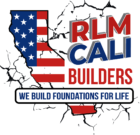The Best Ways to Protect Your House in Chilly Climates
As the temperature continues to decrease, several challenges connected to the changing of the seasons begin to present themselves for homeowners and builders. In cold climates with seasonal ground freezing and the possibility of frost heave, a frost-protected shallow foundation is a viable alternative that can save customers time and money.
In the northern parts of the United States, the frost line is located around four feet below the depth at which standard foundation footings are normally installed.
Do you want to learn how to construct homes using slabs in areas that have a colder climate? Should you build a slab on grade rather than a basement for the foundation of the house? What is the most effective method of construction to use when working in colder temperatures? Stay with me here! This article will compare and contrast heated structures with unheated buildings, as well as examine the best way to construct slabs and provide insulation for them.
Slab House vs. Basements In Chilly Environments
The use of a concrete truck during the construction of a basement is often required three times: once to pour a footing, once to pour the walls, and once to pour the floor of the basement. After the construction of the basement is finished, another subfloor must be constructed on top of it. A home built on a slab foundation is less likely to sustain damage from flooding and presents a more favorable profile to insurance providers. The temperature in a basement is typically quite low, and if you want to heat it, you could end up spending hundreds of dollars.
Additionally, more excavation is required to dig out a basement, and if the space is not backfilled properly (when the excavated earth is compacted back into the site), it could result in structural problems. Basements also require extra backfilling.
In Colder Climates, Slab Houses Are Common.
When it comes to choosing the foundation for a home in the north, one of the things that builders have to consider is how the slab will react to the cold. Or, what will happen to a slab if it is placed below the frost line, which is the level at which the groundwater in the soil begins to freeze?
The construction industry believed that constructing a basement in a region with a cold environment may save the homeowner more money, particularly if they excavated 36 inches below the frost line. But as a result of a recent study, you won’t have to look quite as deeply. A revolutionary method that has been adopted by builders in Europe, Canada, and the United States for the past fifty years has made it possible for these countries to construct the ideal slab house in a cold climate.
Shallow foundations that are protected from frost
The frost depth is increased from 40 inches to 12 inches while using this approach of building slab dwellings. Because of this, the amount of soil and concrete that freezes beneath the surface is reduced. Insulation made of stiff foam is used in FPSF homes to ward off the chill of winter and collect heat, which is then used to warm the space inside.
Colder climates may benefit from heated buildings.
Footings are typically constructed deeper than is required for the structure in order to protect against frost. This is done since the frost line of an area might be as low as 42 inches. Usually, When the ground freezes and thaws, the footing will heave (or rise upward) if it does not reach beyond the frost line. This will cause the footing to shift out of place. In most parts of the United States, the frost-protected shallow foundation (FPSF) approach can be used to create footings that are an average of around 16 inches deep or less.
This technique helps prevent frost from forming under the footings and delays heat loss from the structure above, so reducing the amount of money you spend on heating expenses.
Although FPSFs are most commonly used for slab-on-grade construction, the approach is also effective when used to stem wall foundations and unventilated crawlspace foundations. Although FPSFs are most commonly used for slab-on-grade construction, It is also effective in renovating, because the shallow excavation causes less disruption in the area around the building. Additionally, it is useful in walkout basements, because insulation of the foundation on the side of the structure that faces downhill is helpful.
The Index of Air-Freezing Temperature
The Air-Freezing Index measures the total amount of time spent above and below freezing temperatures throughout the course of a given winter as well as the magnitude of these temperature swings. In some regions, such as the southern part of the state of Florida, the minimum quantity of insulation that a foundation must have is relatively minimal. This results in a reduced required amount of insulation and makes it possible to have shorter footing depths. Northern Minnesota and other parts of the state have a great demand for both vertical and horizontal insulation.
Who Can Assist in the Repair of a Slab Home?
Who should you contact for assistance if you are having problems with your slab house or if you want to have it inspected to make sure it is up to date? Check out RLM Retrofit Foundation, a company that has won numerous awards and is functioning exceptionally well. Any of the aforementioned services, in addition to our expertise in crawl space, foundation, and slab repairs, are available through our company. For a free Foundation Inspection Near Me Los Angeles call now.










